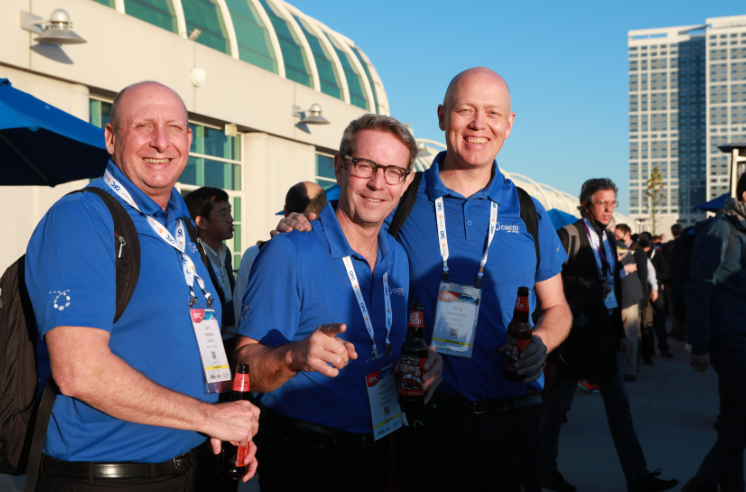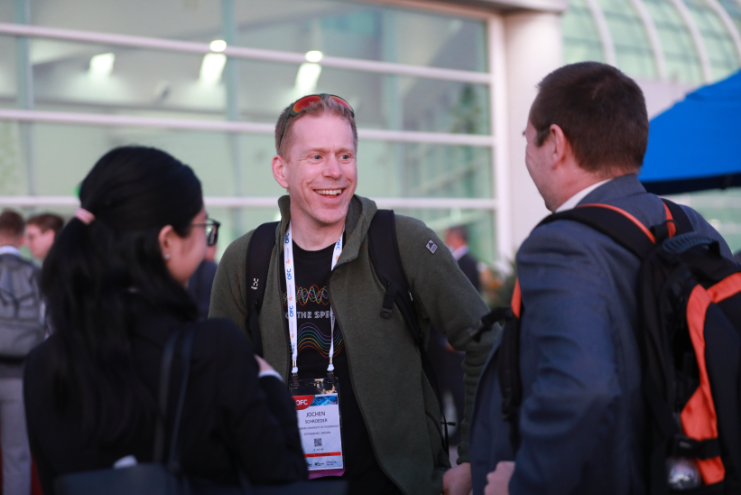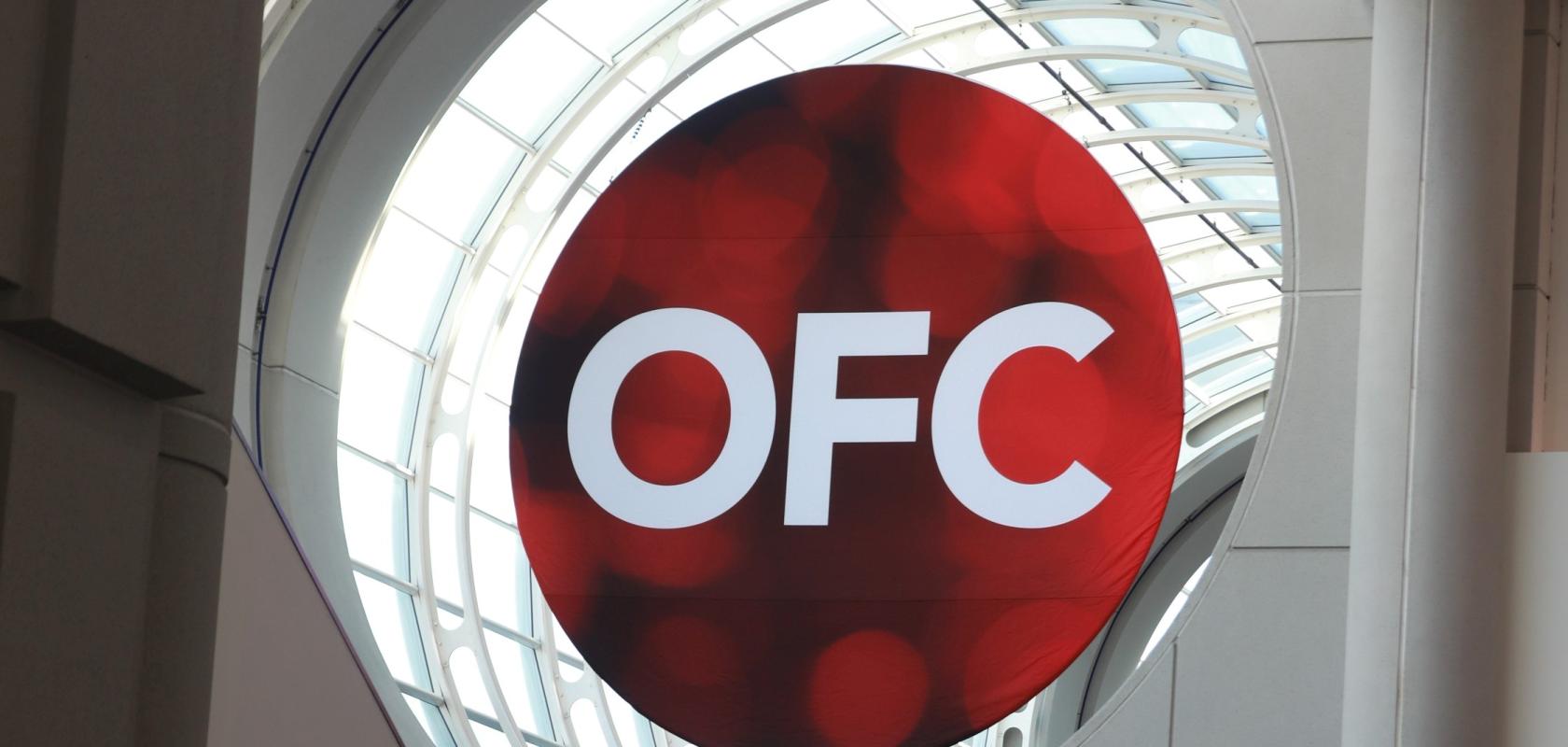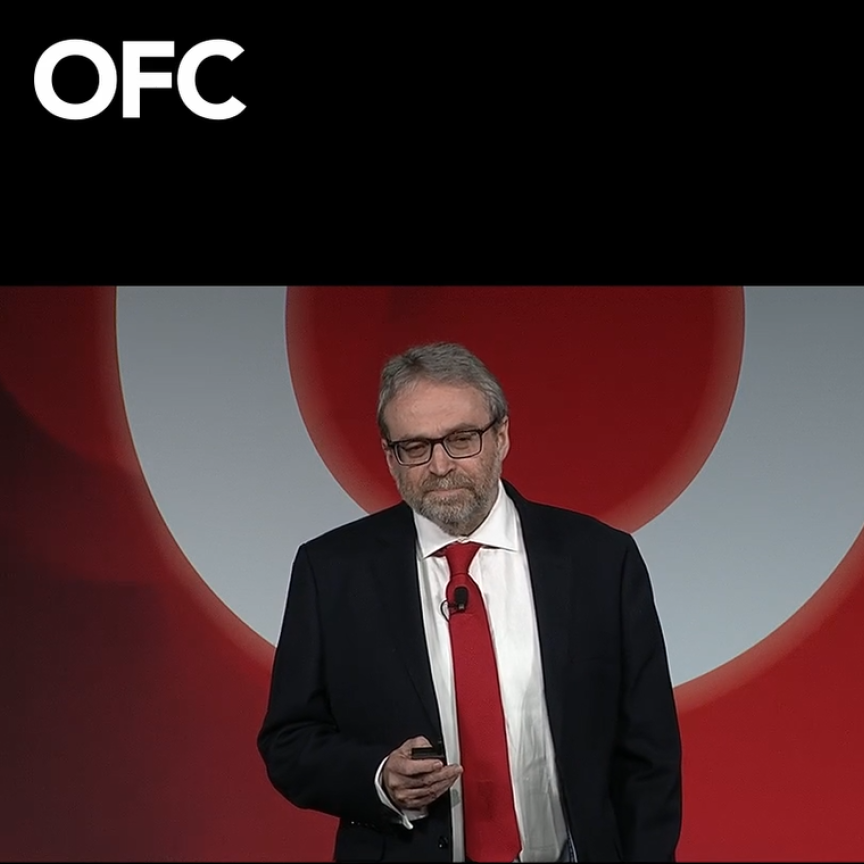The global conference and exhibition for optical communications and networking professionals returned to San Diego from 5-9 March.
The event brings together representatives from the entire optical communications supply chains and related verticals, from research and academia to the commercial market, and from suppliers and manufacturers of components, systems and other technology, to operators and providers of terrestrial, submarine and data centre networks.
The three-day exhibition will showcase the latest technologies and discoveries in optical communications equipment, with exhibiting companies presenting and demonstrating network equipment and software, active and passive components, test and manufacturing equipment, data centre/IT products and cable and fibre.
As always, the popular five-day technical conference includes peer reviewed presentations and invited speakers presenting the highlights of emerging technologies. This year there will be three special sessions, three symposia, 11 workshops and 10 panel discussions covering key topics such as quantum networking, network analytics technologies like machine learning and AI, 5G innovations and more.
This year’s plenary programme, taking place on 7 March, will see speakers Patricia Obo-Nai, Chief Executive Officer, Vodafone Ghana; Jayshree V. Ullal, President and Chief Executive Officer, Arista; and Wendell P. Weeks, Chairman and Chief Executive Officer, Corning offer their insights into how revolutionary technologies are shaping the world, as well as the impacts they will have on the industry in the future. Topics covered will include the future of network build outs in Ghana, data-driven cloud networking, and reliable high-speed networking.
Special sessions: Ultra-stable frequency sources; data centres and photonics for visible wavelengths
The special sessions this year include “Ultra-stable frequency sources and their future applications in telecom.” This session brings together researchers with expertise in fibre communications, environmental sensing, precision metrology and spectroscopy, atomic clocks and stabilised lasers, and quantum sensing to bridge communications to find common research grounds and solutions - such as measurement sensitivity using undersea cables using sources with high frequency and phase stability developed by the metrology community. The session will also touch upon frequency references in other applications, including space communications, wireless communications, atmospheric sensing, time transfer, geodetic sensing, and synchronisation of large-scale experiments.

The second special session is entitled “High performance networks for future data centre and computing applications.” The speakers, from organisations such as Google, Massachusetts Institute of Technology, Nvidia, Alibaba Cloud and Microsoft Azure, will discuss the growing workloads for data centres, thanks to emerging applications, in particular, machine learning workloads. It will look at emerging trends, and ask questions such as whether optics will penetrate composable systems or the accelerator-to-accelerator space; the role of reconfigurable network topologies; whether Ethernet will continue to be the driving design paradigm in the AI era; and, when it comes CXL or proprietary interconnects: what protocol could dominate the chip-scale fabrics.
Third in the lineup is “Photonics for visible wavelengths,” which will cover mature and emerging applications of visible light photonics. The session will address why visible light is needed and the benefits of working in the more traditional telecommunication range, and it will explain how mature the current applications are and what systems are used in the field. State-of-the-art of visible light devices will be covered, such as lasers, detectors, and fibres, as well as foundry processes and packaging needs. Speakers will look at the maturity of the current available technologies and whether today’s, or anticipated future performance is acceptable for application needs. The session will also attempt to highlight the most significant outstanding needs in this emerging field. National Institute.
Symposia: quantum, sustainability and network analytics
This year, the three symposia cover quantum for optical communications, sustainability, and network analytics.
The quantum symposium will look at recent advances in quantum technologies, and how they are enabling new functionality in communication networks. It will discuss the use of quantum key management system support as a feature on commercial optical transmission systems and how quantum random number generators are attracting attention for use in a variety of applications. But with research accelerating on the development of networked quantum computing to scale existing platforms and provide internet-like capabilities; and new activity emerging around entanglement distribution and routing, there is a wide range of potential new research areas in optical devices, communications and networks, spanning both the near and long term. This symposium will look at issues such as quantum networking beyond QKD; the challenges in achieving quantum internet; quantum computing platforms and the role of photonics; and whether changes are required to the optical infrastructure to support quantum internet.
New for this year is a subcommittee dedicated to Quantum Devices, Systems and Networking. This reflects, says Ramon Casellas, Senior Researcher at the Centre Tecnològic de Telecomunicacions de Catalunya (CTTC) and OFC Chair, a growth in research and development for optical communications. He says: “This is something that we are going to witness this OFC. It means that quantum has been growing. Now, we're not talking about maths in quantum computing, but mostly quantum networking. What is clear is that in previous years, we saw an increase in the submission of papers related to quantum. It was becoming hard to ensure that there were enough experts from different tracks to rank and score the papers. It requires specific knowledge, know-how and knowledge, so the programme chairs this year created the dedicated subcommittee.”
Turning to the increasingly important issue of sustainability, and thus symposium will focus on how future optical communication systems and networks can ensure environmental sustainability as they evolve. This is the first in a series of OFC symposia on this topic, and so aims to reflect on previous smart city predictions made OFCity 2015 competition teams towards sustainability, as well, as well as to discuss related recent R&D efforts and future opportunities towards achieving sustainable development goals from data centre network operators, telecom network operators, system and technology providers, and academia. It is hoped that the symposium will highlight the crucial next steps for the OFC Community to focus on going forward.
Explains Casellas: “We are trying to give a bit more of the social aspects to our research. We want to have an impact in society and I'm glad that there is this symposium about photonics for UN sustainability and we have a plenary speaker (Patricia Obo-Nai, Chief Executive Officer, Vodafone Ghana) discussing how technology and networks can improve lives.”
The symposium focused on network analytics will look at this important new area of innovation that has been widely led by data centre network demands. It will address some of the exciting use cases as innovations in enabling technologies, such as leveraging advancements in software automation, telemetry and provisioning with model driven abstractions combined with machine-learning and AI data analytics, towards network (often multilayer) optimisation. The aim is to identify the main optical network analytics use cases, their feasibility, barriers, and related R&D efforts. Invited speakers from data centre operators, telecom network, system and technology providers, and academia will review the advancements and debate the important next steps.

OFC chairs Chris Cole, Coherent; Ramon Casellas, Centre Tecnològic de Telecomunicacions de Catalunya, and Ming-Jun Li, Corning say: “Our special sessions, panels and symposia offer attendees access to cutting-edge technologies impacting and solving real-world challenges, for example, coherent optics and modules, low-power high-speed VCSELs, quantum dot lasers, visible light communication and PON beyond 100Gb/s.”
OFCnet and other events
This year’s workshops will debate the latest technologies and topics, which include smart pluggable coherent optics, fibre capacity, optical access, future quantum computing architectures, optics in space exploration, data centre discussions on green options and killer applications, to name but a few. The panel discussions, meanwhile, will feature executives, technical experts, academia, media and analysts getting to grips with the latest in 5G connectivity, virtualisation in optical networks, lidar systems and technologies with integrated photonics, photonic AI accelerators, data centre technologies and more.
One topic that will be covered that has generated a great deal of interest in optical communications research is machine learning, in terms of network monitoring, optical transmission, and even as a service for network automation. “We are we are reaching a point of maturity,” says Casellas. “There is always room for growth, but there are systematically papers on the application of machine learning for preparation for optical transmission.”
Another hot topic, according to Ming-Jun Li, Research Fellow at Corning and OFC Chair,is silicon photonics. He says “Silicon photonics has been popular for many years,” he says, “and now the tutorial speakers and invited speakers this year really reflect that silicon photonics is a hot topic. We have two tutorials about silicon photonics and also nine invited speakers!”
It’s not just the technical conference and events where visitors can learn about the latest trends in optical communications. There is also the usual business-focused show floor programme taking place alongside the exhibition between 7-9 March. Taking place across three theatres, these programmes: Market Watch, the Network Operator Summit, and the Data Center Summit will address the state of the industry, the latest application topics, the inside perspective from service providers and network operators and emerging technologies for intra and/or inter data centre connectivity. According to the chairs: “OFC’s free programming on the exhibit floor, featuring presentations and discussions on market trends and topics critical to driving advancements in the optics industry, is highly anticipated.”
Ming-Jun Li, Research Fellow at Corning and OFC Chair revealed that silicon photonics is also proving to be a popular topic for this year. “Silicon photonics has been popular for many years,” he says, “and now the tutorial speakers and invited speakers this year really reflect that silicon photonics is a hot topic. We have two tutorials about silicon photonics and also nine invited speakers!”
Visitors can also see OFC's high-speed optical network, OFCnet, which enables select demonstrations of networking products, solutions and architectures. This year, the live network will showcase emerging technologies including quantum networking, network element interoperability, SDN and programmability, and networking for big data/big science applications. OFCnet will enable booth-to-booth fiber connectivity for on-site optical demonstrations while also extending CENIC to the OFC Exhibitor show floor. This connectivity will provide new opportunities for exhibitors who collaborate with affiliated academic institutions to highlight advancements and capabilities in a live real-time, fully operational network environment.This is just an early preview of what to expect, from the conference, you can find out more about the technology on the exhibition floor by reading our exhibition preview.


